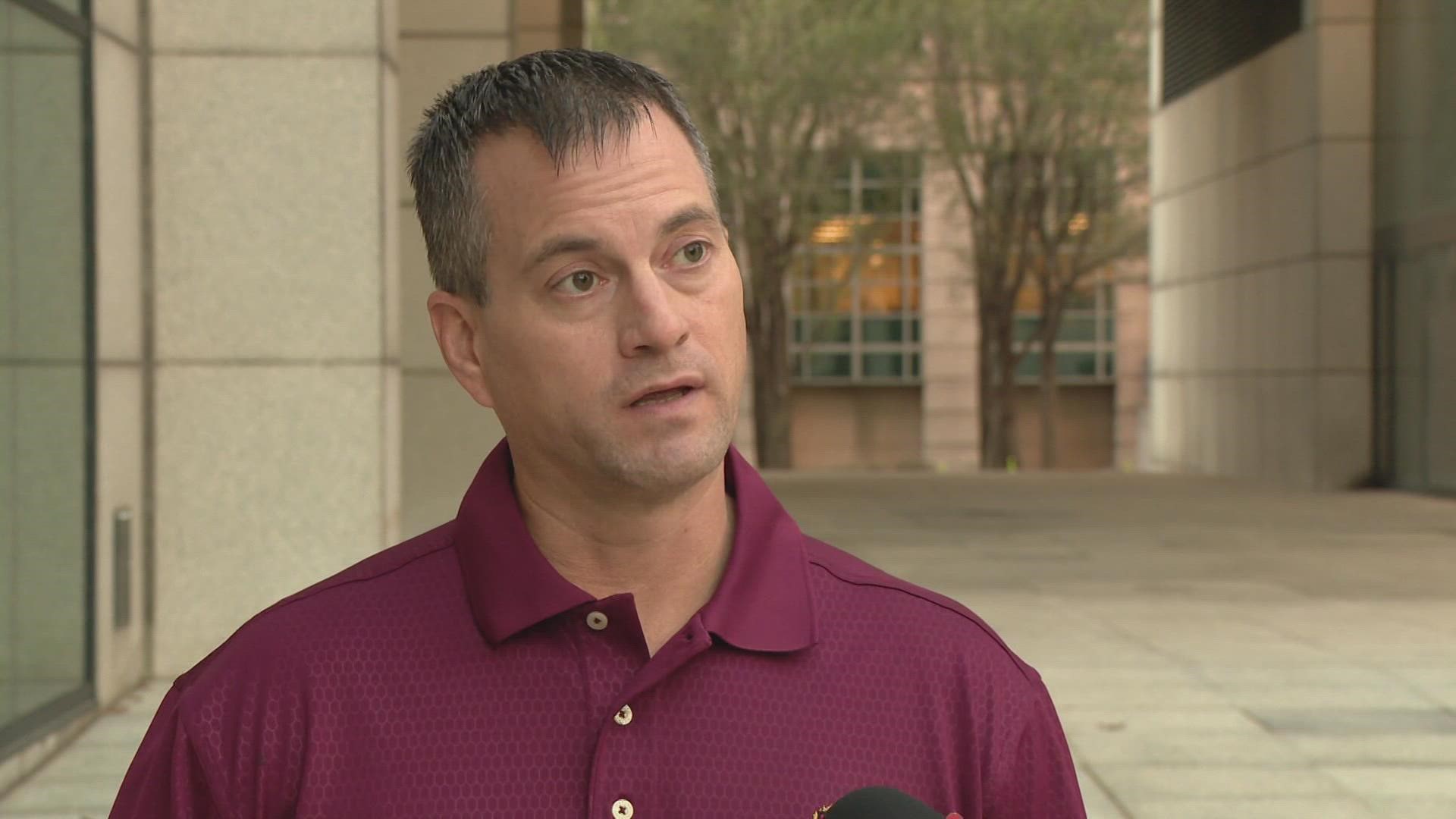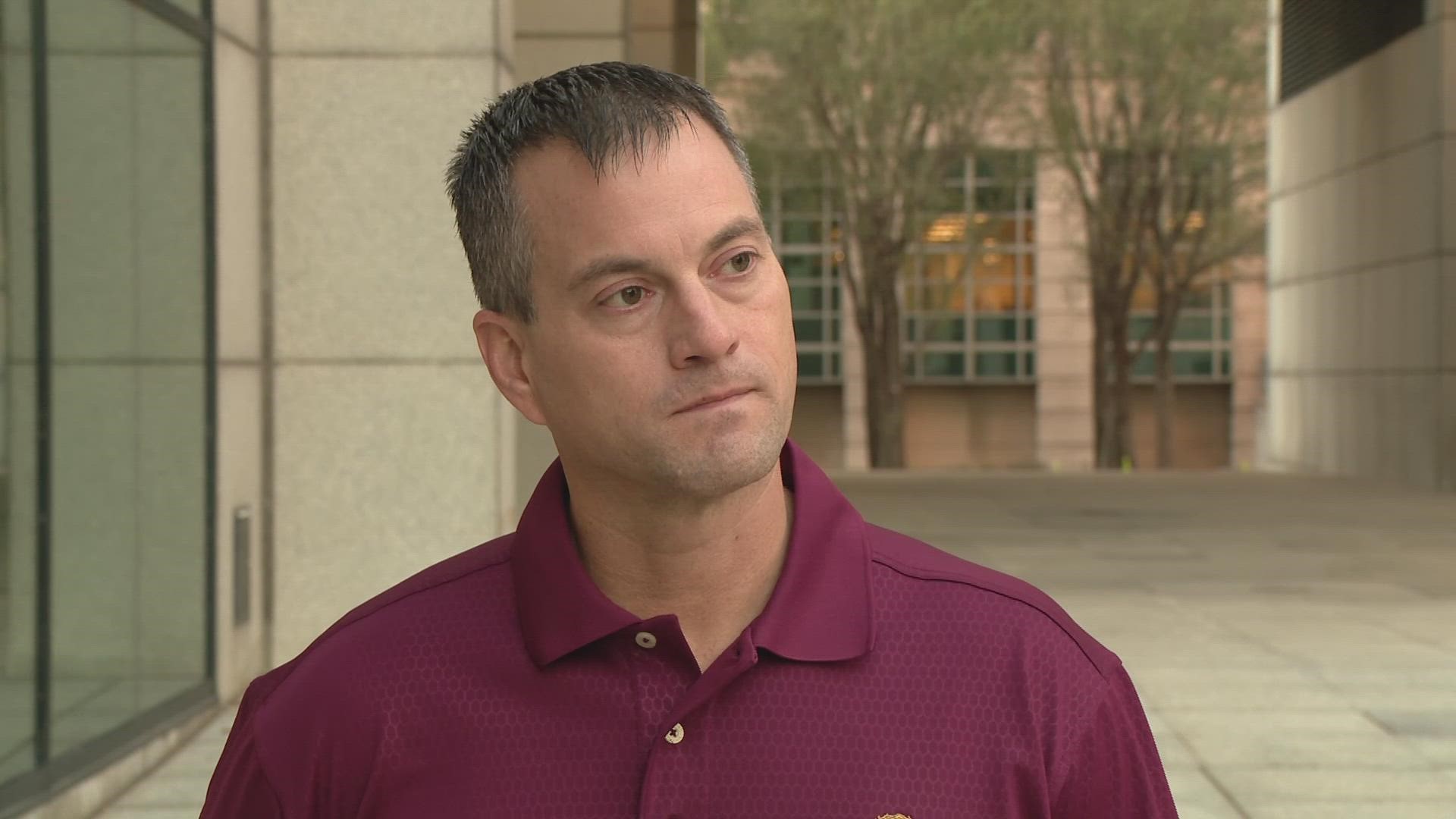ILLINOIS, USA — Labor unions are declaring victory in a closely contested fight to enshrine collective bargaining rights into the Illinois Constitution as the mathematical possibility for its defeat nears zero.
Amendment 1, widely referred to as the Worker's Rights Amendment, would effectively ban right-to-work policies in the pro-labor state. While the number of outstanding ballots yet to be counted could still technically defeat the measure, the election data suggests it is far more likely that the measure succeeds by a fairly wide margin.
"We don't think it's gonna fail," LiUNA representative Randy Harris said. "We think it's passed. We think it's good. The numbers all back that up that it's passed."
The degree of certainty hinges on a number of variables, including counting the outstanding mail-in ballots and how that number might factor into the two possible ways for the state to certify a ballot initiative victory.
Illinois law allows two paths to change the state constitution. The guaranteed way to win a ballot initiative is with 60% of the vote on the ballot question. The second way to win is to get 50% of all ballots cast to include a yes vote.
Because many voters don't fill out their entire ballot, these two numbers are rarely the same.
"It's extremely close," Matt Dietrich with the Illinois State Board of Elections said. "If you're following the unofficial count now, it's at 58% or 59%. So it's just under that threshold. The other way it can pass is if it gets more than 50% of the vote among all ballots cast, and that's where our official count will come into play."
Currently, with roughly 99% of precincts reporting results and roughly 234,776 outstanding mail-in ballots not yet reported, the proposal has 58.4% support among voters who answered the question, just shy of the 60% required for a guaranteed victory.
Many voters either refuse or forget to fill out the ballot question, which makes the math on calling the race somewhat of a moving target.
So far, voters filled out the Worker's Rights Amendment question on roughly 91% of the ballots.
Illinois law allows local election authorities to continue counting mail-in ballots for up to two weeks after the election, as long as they were mailed and post-marked on or before election day.
The bulk of the mail-in ballots not yet returned, roughly 190,500 of the 234,776 unreturned ballots, or 81% of them, come from counties that voted heavily in favor of the pro-union measure, according to updated voting data from the Illinois State Board of Elections.
The outcome of the ballot question will depend on how many of those outstanding mail-in ballots come back. If none of them come in at all, the current result of 52.85% of total ballots cast would represent a victory for unions.
If every single outstanding mail-in ballot came back empty or with a vote against the measure, an outcome which is highly unlikely, the percentage of votes in favor would fall to 49.92%. That narrow mathematical window is the only reason why news organizations have not called the results as final.
In other words, it is still technically mathematically possible for the amendment to fail, but it is highly unlikely. It is far more probable, and a safe projection, that the Worker's Rights Amendment will pass by a fairly wide margin once all the votes are counted.
For example, in recent years, just about 85% of voters who requested mail-in ballots ever sent them back in. Some opted to vote in person instead. Others just never mailed them at all.
Using that estimate, election officials could safely assume they might only see 199,560 out of the 234,776 outstanding ballots returned. In that scenario, even if every single one of the likely mail-in ballots came back empty or with a vote against the amendment, the percentage of yes votes out of total ballots cast would still rise to 50.34%, assuring victory for the unions.
Because most of those ballots come from counties that heavily favored the amendment, even a conservative estimate would project the low end of the final vote tally at or above 52.7%.
Anti-union groups like the Illinois Policy Institute ran a barrage of disparaging material including false or misleading claims about the impact of the proposal in an effort to drag the ballot question below the thresholds it needed to pass.
"The good news now is we don't have to worry about it," Harris said. "But what you see in Right to Work states typically is wages go down, workplace accidents go up, people are less safe at work, more deaths on the job, social services go down, the tax base goes down."
The Worker's Rights Amendment polled higher than every Democrat on the statewide ballot and won higher margins of victory in several counties than popular Democrats like Senator Tammy Duckworth and Comptroller Susana Mendoza.
"The policy is very popular," Harris said. "People believe in their rights at work."
The election results might offer lessons for politicians or parties looking to rebuild and reorganize their strategy after suffering electoral defeat.
"How do you connect with voters, and how do you connect with workers, I think is to not try to take away their rights," Harris said. "Make sure that they have those rights at work, make sure that that workers are protected."


